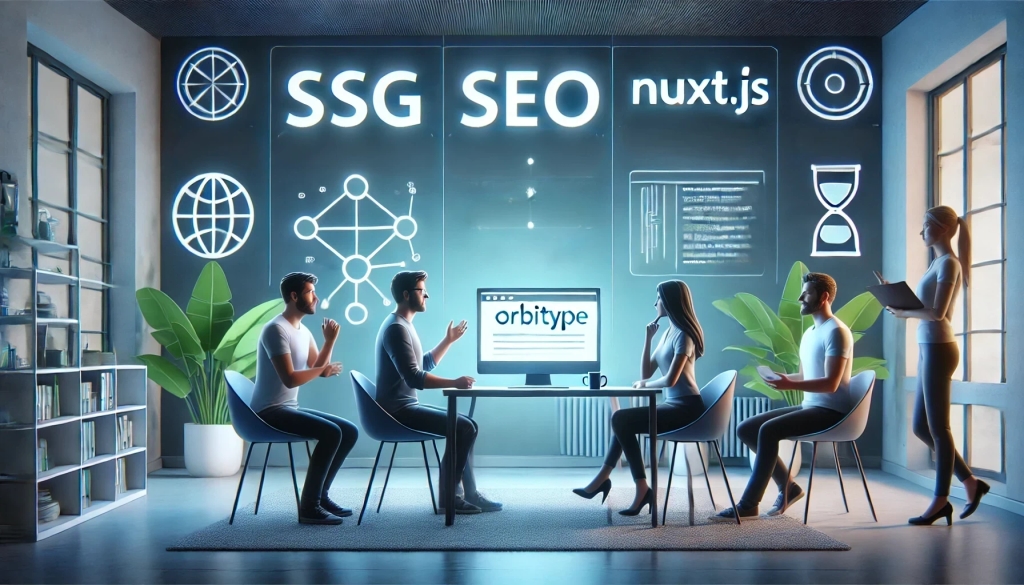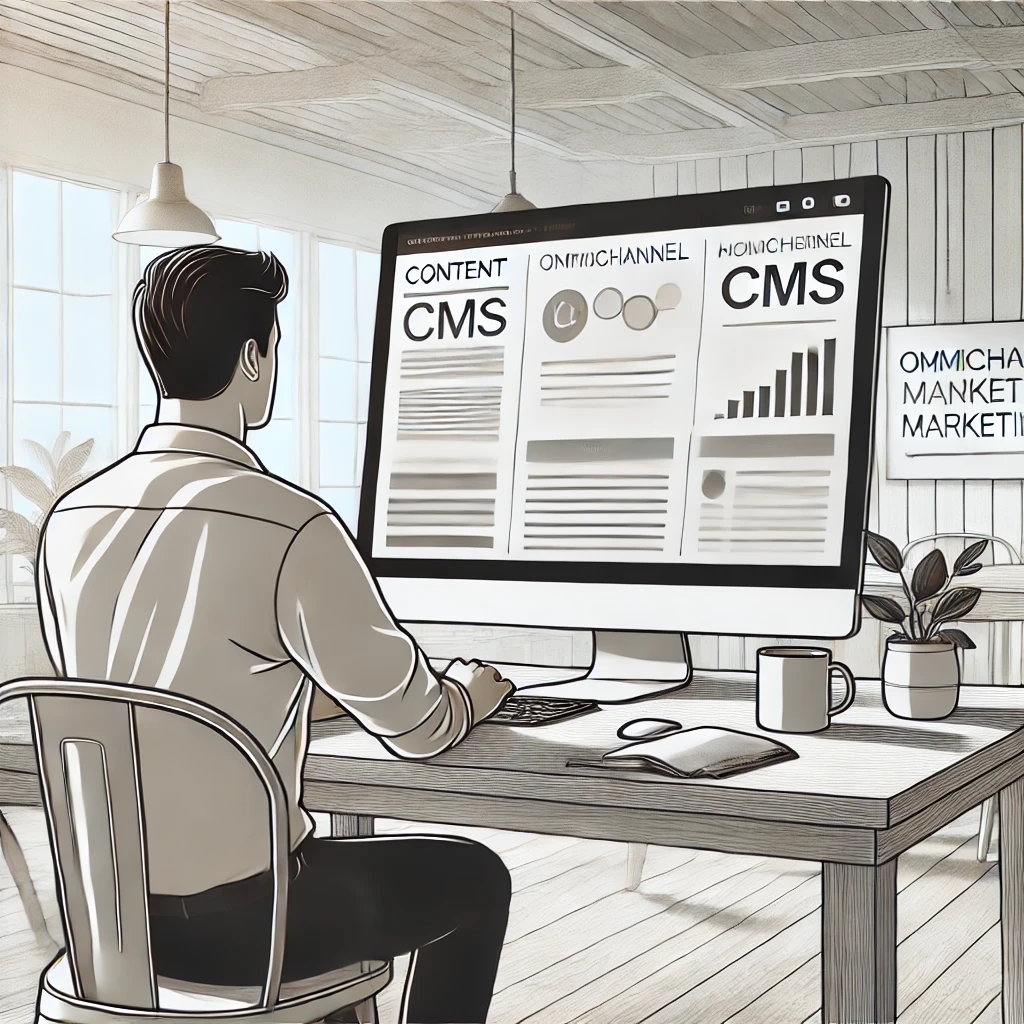Web Content Management Best Practices for Small Businesses

Introduction
Running a small business is no small feat, and managing your digital content effectively can make a world of difference in attracting customers, building your brand, and driving growth. However, many small businesses face challenges such as limited resources, time constraints, and a lack of technical expertise. The good news? With a strategic content management strategy, you can overcome these obstacles and thrive in the digital space.
Here, we’ll share actionable strategies tailored specifically for small and medium-sized enterprises (SMEs) to help you streamline your content management strategy and deliver the right types of content to your target audience.
1. Define Your Content Goals
Before you create or manage any content, it’s crucial to identify your objectives. What do you want your website to achieve for your business? Your goals will shape the type of content you create, how you present it, and where you distribute it.
Examples of Content Goals for SMEs:
Generate leads by encouraging visitors to sign up for newsletters or consultations.
Build brand awareness through educational blogs or engaging visuals.
Drive sales with compelling product descriptions and clear calls-to-action.
Align your content strategy with your business objectives. For example, if your goal is to generate leads, focus on creating lead magnets like eBooks, downloadable guides, or free trial offers. Regularly revisit your goals to ensure your content management strategy remains aligned with your evolving business priorities.
2. Choose the Right Content Management System (CMS)
Your content management systems (CMS) are the backbone of your web content management strategy. It’s where you create, organize, and publish content—and the right CMS can simplify these tasks.
What to Look for in a CMS:
Ease of Use: Ensure it’s intuitive and doesn’t require extensive technical knowledge.
Scalability: Choose a CMS that grows with your business needs.
Integration Capabilities: Opt for a system that connects seamlessly with other tools like analytics or email marketing platforms.
Cost-Effectiveness: Small businesses need affordable yet robust solutions.
Headless content management systems, like Orbitype, are excellent choices for small businesses seeking flexibility. They allow you to decouple the front-end display from the back-end content management, making it easier to deliver a seamless user experience across multiple platforms—from websites to mobile apps.
3. Organize and Streamline Content Creation
Content creation can quickly become overwhelming without a structured approach. Establishing an efficient process ensures consistency and saves time.
Create a Content Calendar: Plan your content weeks or months in advance. Use a calendar to schedule blog posts, product updates, and promotions.
Standardize Templates: Develop templates for blogs, landing pages, and social media posts to maintain a cohesive brand identity.
Delegate Roles: Assign team members—writers, editors, and designers—to streamline workflows and avoid bottlenecks.
Small teams or content creators can leverage automation tools to minimize manual work and focus on producing high-quality digital content that resonates with the target audience.
If your team includes content editors and content managers, ensure clear workflows and communication channels are in place to improve efficiency. Two content editors can focus on reviewing and refining blogs, while four content managers can oversee content strategy, distribution, and performance tracking.
4. Optimize Content for Search Engines
Search engine optimization (SEO) is essential for small businesses looking to attract organic traffic without breaking the bank on advertising.
Focus on Local SEO: Many small businesses rely on local customers. Optimize for local keywords, claim your Google My Business listing, and encourage customer reviews.
Prioritize Keywords: Use tools like Google Keyword Planner to identify relevant keywords for your business.
Optimize Metadata: Include keywords in meta titles, descriptions, and alt text for images.
Produce High-Quality Content: Search engines favor content that provides value to readers. Address common customer pain points and questions in your blogs or FAQ sections.
Content managers should regularly update content to reflect changes in search trends and user behavior, ensuring their digital content remains relevant and search-engine friendly.
5. Prioritize Mobile and Accessibility
With more users browsing on mobile devices than ever before, having a mobile-friendly website is non-negotiable. Additionally, ensuring your site is accessible to all users enhances its reach and usability.
Mobile Responsiveness: Test your site across devices to ensure it loads quickly and looks great on smaller screens.
Accessibility Standards: Follow guidelines such as WCAG (Web Content Accessibility Guidelines) to make your site usable for people with disabilities. This includes providing alt text for images, ensuring proper color contrast, and enabling keyboard navigation.
Accessibility isn’t just a best practice—it demonstrates your commitment to inclusivity and can improve your site’s search engine rankings.
6. Track Performance and Adjust
Measuring your content’s performance helps you identify what works and what doesn’t. Use this data to refine your approach.
Key Metrics to Monitor:
Traffic: How many visitors does your site attract?
Engagement: Are visitors reading your blogs, watching your videos, or clicking on your CTAs?
Conversions: How many visitors take the desired action (e.g., making a purchase or filling out a form)?
Content managers can use tools like Google Analytics to track these metrics. Create regular performance reports to evaluate your strategy and adjust as needed. For example, if blog traffic is high but conversions are low, consider refining your CTAs or landing pages.
7. Leverage Automation Tools
Automation can be a game-changer for small businesses with limited resources. From scheduling social media posts to updating product descriptions, automation tools can save you time and effort.
Benefits of Automation:
Save time by automating repetitive tasks.
Reduce human error in content scheduling and publishing.
Improve consistency by adhering to predetermined schedules.
Tools like Orbitype offer built-in automation features for SMEs, allowing your content team to automate workflows and focus on strategic tasks like content creation and customer engagement.
Conclusion:
Effective content management strategy doesn’t have to be overwhelming, even for small businesses. By setting clear goals, choosing the right content management systems, optimizing your content, and leveraging tools like Orbitype, you can simplify your process and achieve measurable results.
Take the first step today: audit your current content strategy and identify one area to improve. Whether it’s enhancing your site’s accessibility, refining SEO practices, or expanding your content types, every improvement counts.
If you’re ready to transform your content management process, consider exploring how Orbitype can help. Schedule a free consultation to learn more about our tools and features—tailored to meet the unique needs of small businesses.
Read more

Seamless Data Management: Integrating Wasabi Cloud Storage with Orbitype
Boost your CMS performance with Wasabi Cloud Storage and Orbitype integration. Learn how this cost-effective, scalable solution enhances data management and delivers exceptional results.

Integrating Orbitype with Nuxt.js for Optimal Performance and SEO
Leveraging Orbitype, a robust headless CMS, with Nuxt.js, a Vue.js framework, provides developers a powerful solution for building fast, SEO-optimized websites. This blog post explores how the integration of Orbitype and Nuxt.js harnesses the benefits of static site generation (SSG) and server-side rendering (SSR), thanks to Orbitype's API-driven content management system.

TypeScript vs. JavaScript
Discover the synergy between TypeScript and JavaScript for web development. Learn how Orbitype supports Nuxt CMS, headless CMS for Nuxt, and future-ready digital trends.

Building Progressive Web Apps (PWAs) with Orbitype
Explore how Orbitype enhances Progressive Web Apps (PWAs) with optimized performance, offline capabilities, and seamless content management for superior user experiences.

Leveraging Orbitype for Efficient Content Management in E-Commerce
nhance your e-commerce performance with Orbitype CMS. This scalable headless CMS simplifies content management, boosts SEO, and seamlessly integrates with Shopify, WooCommerce, and Magento for dynamic, flexible solutions.

Mastering Third-Party Integrations with a Headless CMS for Efficient Workflows
Streamline workflows and scale your business with seamless third-party integrations using Orbitype's flexible headless CMS—designed for efficiency, automation, and growth.

How Orbitype Compares to Headless CMS Leaders in 2025
Struggling to choose the best CMS? Discover how Orbitype compares to headless CMS leaders in 2025, solving complexity and scalability challenges with ease. Try Orbitype!

How Educational Institutions Benefit from Headless CMS for Online Learning
Enhance online learning with a Headless CMS. Discover how centralized content management, scalability, and seamless multi-channel access can transform educational platforms.

Nuxt vs Next: Which Framework Works Best with Headless CMS?
Compare Nuxt.js and Next.js to find the best frontend framework for your Headless CMS. Discover which offers better performance, scalability, and flexibility for dynamic web projects.

Streamlining Development: Integrating Orbitype with Top DevOps Tools
Discover how to integrate Orbitype with leading DevOps tools like Jenkins, Docker, and Kubernetes. Learn best practices for automating deployments, containerizing Orbitype, and scaling efficiently while streamlining workflows for continuous integration and delivery.

Building High-Performance Vue Apps with a Headless CMS
Discover how to optimize Vue.js apps with a Headless CMS for high performance, scalability, and SEO. Learn best practices and tools for creating dynamic web apps.

SQL or NoSQL: What's Best for Mobile Applications Using Orbitype?
Explore Orbitype, the ultimate headless CMS for React developers, offering seamless content management, enhanced performance, and flexibility to create dynamic web applications with ease. Learn how Orbitype simplifies workflows and boosts productivity.

Comparing Orbitype and Ghost: Best CMS for Blogging in 2025
Compare Orbitype and Ghost to find the best CMS for blogging in 2025. Discover which platform suits your goals, from scalability to simplicity and dynamic content

Top 5 Alternatives to WordPress for Modern Developers in 2025
Discover the top WordPress alternatives for 2025, including Orbitype, Contentful, and Strapi. Explore modern CMS platforms offering scalability, flexibility, and cutting-edge tools for developers.

Security and Compliance in Headless CMS: Focus on Orbitype
Explore headless CMS security with Orbitype: advanced authentication, data encryption, and compliance with GDPR & CCPA. Learn best practices for secure CMS operations.

10 Tips for Optimizing Core Web Vitals in Headless CMS Websites
Discover 10 actionable tips to optimize Core Web Vitals for Headless CMS websites. Improve performance, SEO, and user experience with these essential strategies.

Next.js vs Gatsby: Which Works Best With a Headless CMS?
Choosing between Next.js and Gatsby can be challenging when working with a Headless CMS. This guide breaks down their strengths and helps you decide which framework works best for your dynamic or static content needs.

CMS for Vue.Js - Orbitype Headless CMS
Explore Orbitype, the best Headless CMS for Vue.js, offering seamless API integration, dynamic content management, and unmatched performance for interactive front-end development.

CMS for Nuxt - Orbitype Headless CMS
Optimize your Nuxt.js projects with Orbitype, the API-first Headless CMS offering scalable content management, multimedia repositories, and enhanced SEO for modern web applications.

Best Headless CMS Solutions for Portfolio and Personal Websites
Showcase your work with ease using Orbitype—the ultimate Headless CMS for portfolio and personal websites. Enjoy seamless integration, powerful customization, and SEO-friendly features designed for creators and developers.

How Headless CMS Empowers Omnichannel Marketing Strategies
Boost your omnichannel marketing strategy with a Headless CMS. Centralize content management, deliver personalized customer experiences, and ensure consistency across platforms.

How to Scale Your Website with a Headless CMS for High Traffic
Scale your website effortlessly with a headless CMS like Orbitype—achieve faster load times, seamless scalability, and reliable performance during high-traffic surges

CMS for React - Orbitype Headless CMS
Orbitype is the ideal CMS for React developers, combining seamless API integration, flexible content management, and scalability to create fast, dynamic, and customizable web applications effortlessly.

Automating Content Workflows with Orbitype’s Custom Solutions
Discover how Orbitype's custom CRM and ERP solutions revolutionize content workflows. Automate processes, reduce manual tasks, and improve productivity for software development agencies with tailored tools for seamless collaboration and efficiency.